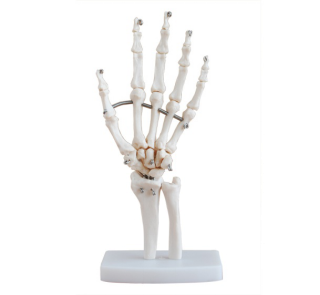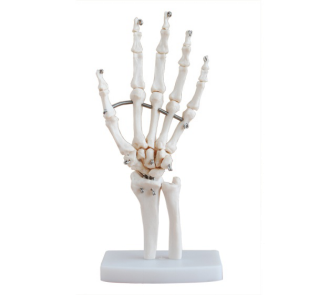ADA MED SUPPLY LIMITED
Phone:+86 19937901373
Tel:+86-0379-65160607
Email:adaanatomy@adaanatomy.com

Article tag: Hand joint model joint model

From the fingertips to the wrist, the hand joint model provides us with a comprehensive display, giving us insight into the complex structure and function of the hand. As the foundation stone of hand movement, the importance of hand joint is self-evident. And the hand joint model is our right hand to explore this mystery.

When we look closely at the hand joint model, the first thing that comes into view is the joint of the fingertip. These tiny joints are not very impressive, but they play an important role. They enable us to perform delicate operations, such as typing and playing the piano. The hand joint model clearly shows the structure of these joints, allowing us to understand how they work together.
Then we turn our attention to the palm. There are many joints in the palm, including the metacarpophalangeal and carpal joints. These joints not only support the daily activities of the hand, but also give the hand strong grip and stability. The hand joint model allows us to intuitively see how these joints are constructed and connected through accurate simulations, thereby better understanding their function.
Above that, you get the wrist. The wrist joint is an important joint that connects the palm to the forearm and allows us to rotate, bend, and perform many other movements. Hand joint models often focus on flexibility and stability when showing wrist joints. Through the model, we can clearly see the bone structure, ligaments, muscles and other tissues of the wrist joint, so as to better understand the movement mechanism of the wrist.
The hand joint model not only shows the hand joint in all aspects, but also provides us with a platform for practical operation. We can use the model to simulate various hand movements, such as making a fist, stretching fingers and so on. This will not only help us better understand the principle of hand joint movement, but also improve our hand coordination and flexibility.
In addition, the hand joint model also has a wide range of applications in medicine, biomechanics and sports science. Doctors can use the model for the diagnosis and treatment of hand diseases; Biomechanists can study models to understand the mechanics of hand movement; Sports scientists can use the models to guide athletes' hand training and movement optimization.
In short, from the fingertips to the wrist, the hand joint model provides us with a comprehensive display and practical operation platform, so that we can better understand the structure and function of the hand joint, and provide strong support for research and application in related fields